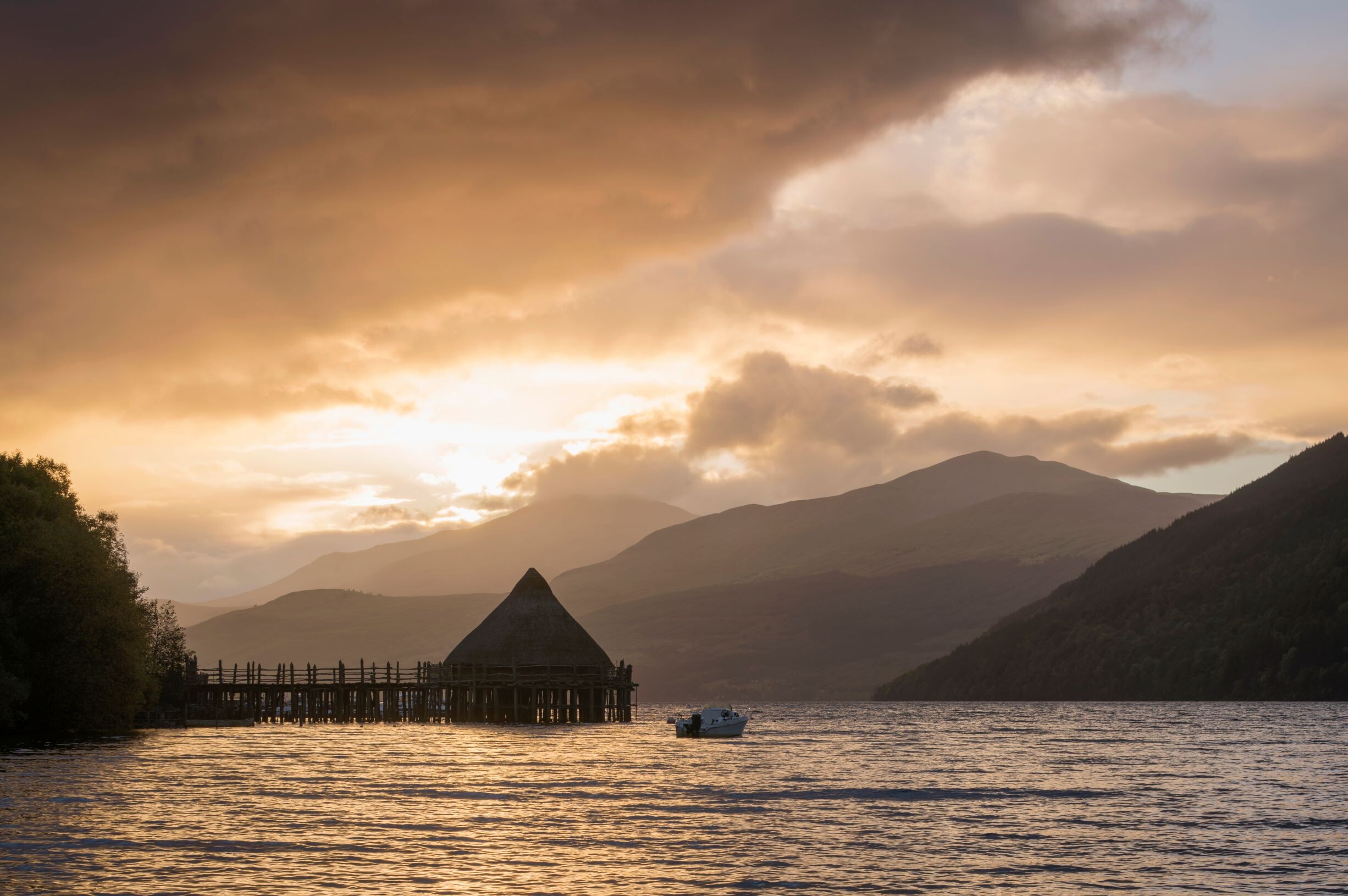Associate feature: Beyond targets: responsible tourism and climate action - interview with VisitScotland chairman Lord Thurso
VisitScotland is leading a sustainable revolution in tourism by asking how they can go further
Scotland is seen as one of the world’s leading destinations, attracting a range of top accolades from the international travel media each year and benefitting from a wonderful reputation among world travellers.
But success brings its challenges and in recent years, the conversation has moved to how best to manage Scotland’s popularity as a destination whilst ensuring sustainable growth from one of the fastest growing industries on the planet.
As Scotland’s national tourism organisation, VisitScotland is responsible for promoting Scotland as a sustainable destination whilst maximising the economic benefit brought by millions of visitors each year.
Some 15 million visitors are attracted to Scotland each year, with three and a half million people coming from overseas. Total spending by tourists reached £5.5bn last year and the value of the sector to the wider economy is estimated to be £10.5bn. All of this helps to support some of Scotland’s most fragile communities.
The challenge for VisitScotland and the tourism industry is to ensure this economic growth is sustainable and addresses the challenge of the climate emergency. It also needs to allow communities to flourish, free from some of the pressures that tourism can bring to some destinations at some times in the year.
Getting this balance right is at the forefront of VisitScotland’s plans for 2020 and the future, says John Thurso, the organisation’s chairman.
“We have been remarkably successful in Scotland with our tourism industry and with our tourism product,” Thurso reflects.
“We are the envy of many countries in the world, both in the way in which we market ourselves and the economic success that’s been derived from that.
“Maintaining that quality of economic input into the country is one of the things at the front of our minds,” he says.
At the same time, Thurso says, it’s been equally important for VisitScotland, for at least the past two years, to move the organisation’s strategy – and hopefully the wider industry – towards an ethos of what he terms “responsible tourism”.
“[It’s about] looking at how we can maintain the economic activity whilst minimising any negative environmental and social impact of that economic activity,” he explains.
“I’m delighted that we at VisitScotland are somewhere ahead of most of the curve on that, because we’ve been thinking about it for a long time.”
When it comes to the climate emergency, VisitScotland’s vision for responsible, sustainable growth in tourism means looking both inside the organisation and out across the sector for opportunities to make positive change.
The starting point is at home, Thurso says.

“Question number one is: are we as an organisation doing all that we can to meet the targets for waste reduction, carbon reduction and so on?
“I’m delighted to say, as our latest sustainability report shows, that we’re not only meeting where we ought to be – we’re well, well ahead of it.”
The Scottish Government, as part of the road to net-zero in 2045, has set interim targets for a reduction in greenhouse gas emissions set against a baseline of 1990/95 levels. By 2020, public organisations have to have cut emissions by 56 per cent.
As of the 31 March 2019, VisitScotland has exceeded that target, achieving a 72 per cent reduction in Co2 emissions. Just in 2018/19 the organisation saw a 30 per cent reduction on the previous year.
“But to my mind, that’s not enough,” Thurso says.
“Simply meeting targets that were set down is not what it’s about. It’s actually about a state of mind, which is: can we go further? Can we look at how we do things and change them in a way so that we consume less carbon?
“And the answer is yes, and we are doing that.”
VisitScotland employees have cut their use of transportation by car, by taking part in initiatives like the Sustrans Workplace Challenge to take public or active travel to work where possible. This change in behaviour has helped to lead to a reduction of 2,288 kg of Co2 output last year.
While continuing to make changes inside the organisation, VisitScotland is looking for the industry to find ways it can use its position to act as an influencer to promote more sustainable practice.
“We’re looking at the way we market, and what we market, to give priority to activities that are low carbon and have low impact on the local environment.”
Promoting innovation and stimulating the debate to identify climate-friendly solutions could, in fact, add value to the already well-established ‘Brand Scotland’, Thurso says, given the nation’s natural environment is the main draw for visitors.
“Many countries have great coasts; many countries have great mountains; many countries have great forests and wonderful rolling farmland. There are very few countries that have all of them.
“If this natural capital and the experiences here in Scotland are also fully sustainable, it adds monumentally to the value of the brand.”
Scotland is celebrating its coasts and waters this year and the approach that VisitScotland and its partners have taken in developing and promoting the year provides a benchmark of sustainability for future tourism initiatives and campaigns.
The Year of Coasts and Waters not only provides an opportunity to highlight the great water-based experiences on offer in Scotland but can also contribute to the climate conversation. Scientists at the James Hutton Institute said the themed year, as well as the UN’s International Year of Plant Health, is “bringing public attention to two huge global challenges and for good reason”.
“The possibilities for showcasing things that are connected with the purity and quality of our waters and our coasts and our seascapes are almost endless,” Thurso says.
On the social impact of increasing tourism, the answer, Thurso says, is in listening to communities.
“Our role at VisitScotland [as] the nation’s strategic marketers is about promoting activities and places where there is capacity to welcome visitors.
“If you look up here,” Thurso says from Caithness, “we have the North Coast 500.
“It’s had a dramatic effect on the economies of the communities along the north coast of Caithness and Sutherland. We’re looking at an increase in economic activity of over 30 per cent.”
To help alleviate the pressure on infrastructure in some locations, VisitScotland is working with local authorities as they apply to the Scottish Government’s Rural Tourism Infrastructure Fund, which the organisation administers.
Twenty-eight projects have already been funded with £6m and the initiative had further investment of £3m in June 2019 for the next round of funding. Previous projects, such as the expansion of the Old Man of Storr car parks on the Isle of Skye, have had a tangible effect.
“Simple things like creating parking spaces and accessible toilets have made a considerable difference,” Thurso says.
Just as greener travel can be incorporated into ‘Brand Scotland’, more considerate tourism can be promoted in such a way that could increase the economic benefit for rural communities, too.

Thurso points to SkyeConnect, the Isle of Skye’s local destination marketing organisation, and its #SkyeTime campaign.
The #SkyeTime campaign seeks to encourage visitors to “stay longer, see less, experience more” and therefore spend more money in the communities they might at present only pass through on day trips, while easing the burden on infrastructure at tick-off-list locations.
“It’s about saying: do tourism slowly,” Thurso says.
“In other words: do come, do stay – but don’t rush. Take longer to do more. This is a strategic approach to marketing, and one of the most important things we can do at VisitScotland is take a strategic approach to how we market the country and the areas which highlight activities that are sustainable.”
Responsible tourism is an idea that VisitScotland plans to develop throughout 2020, particularly with publication of the next sustainable tourism strategy for 2030, which, Thurso says, will have “sustainability at its heart”.
“It’s about helping the industry to change into a sustainable, responsible provider – which means we will have the economic benefits and we will be doing it in a sustainable way."
Looking to COP26 later this year, VisitScotland’s chairman sees an important role for his organisation and the industry.
“I am optimistic about what we can achieve in developing an even more sustainable approach to tourism. VisitScotland and our dynamic industry has much to share with the world by being involved in COP26 and through our existing relationships with tourism organisations around the world.
“Tourism and travel are not the enemy. We need to look at ways to reduce the carbon associated with them and alleviate the impacts and pressure of visitor numbers where they occur.
“We’re already making progress which we can accelerate over the next few years.”
Holyrood Newsletters
Holyrood provides comprehensive coverage of Scottish politics, offering award-winning reporting and analysis: Subscribe